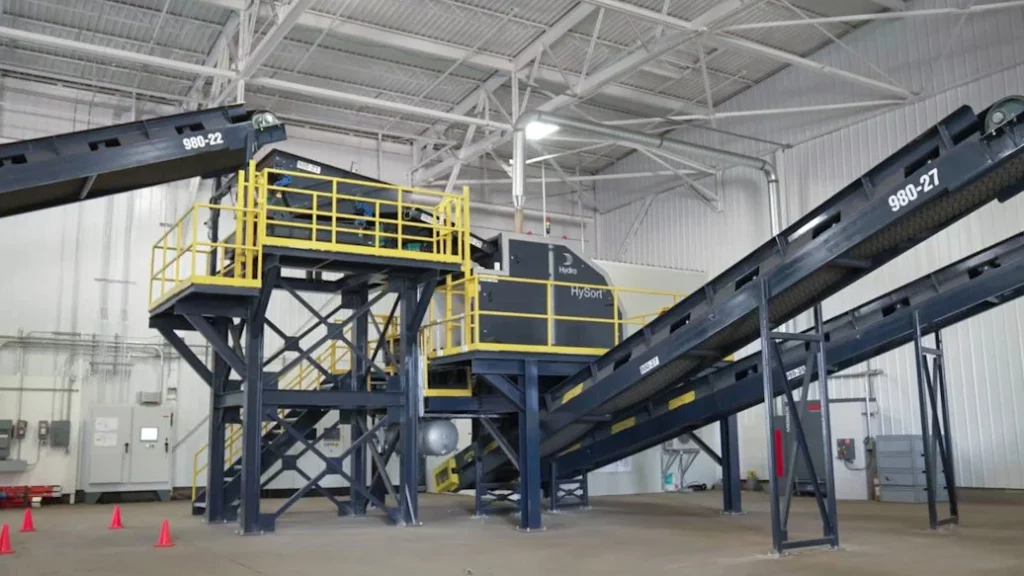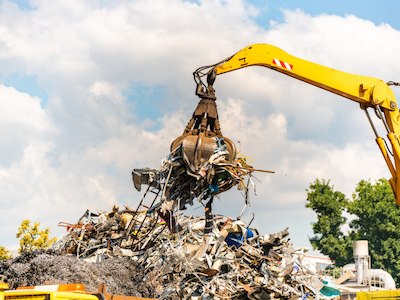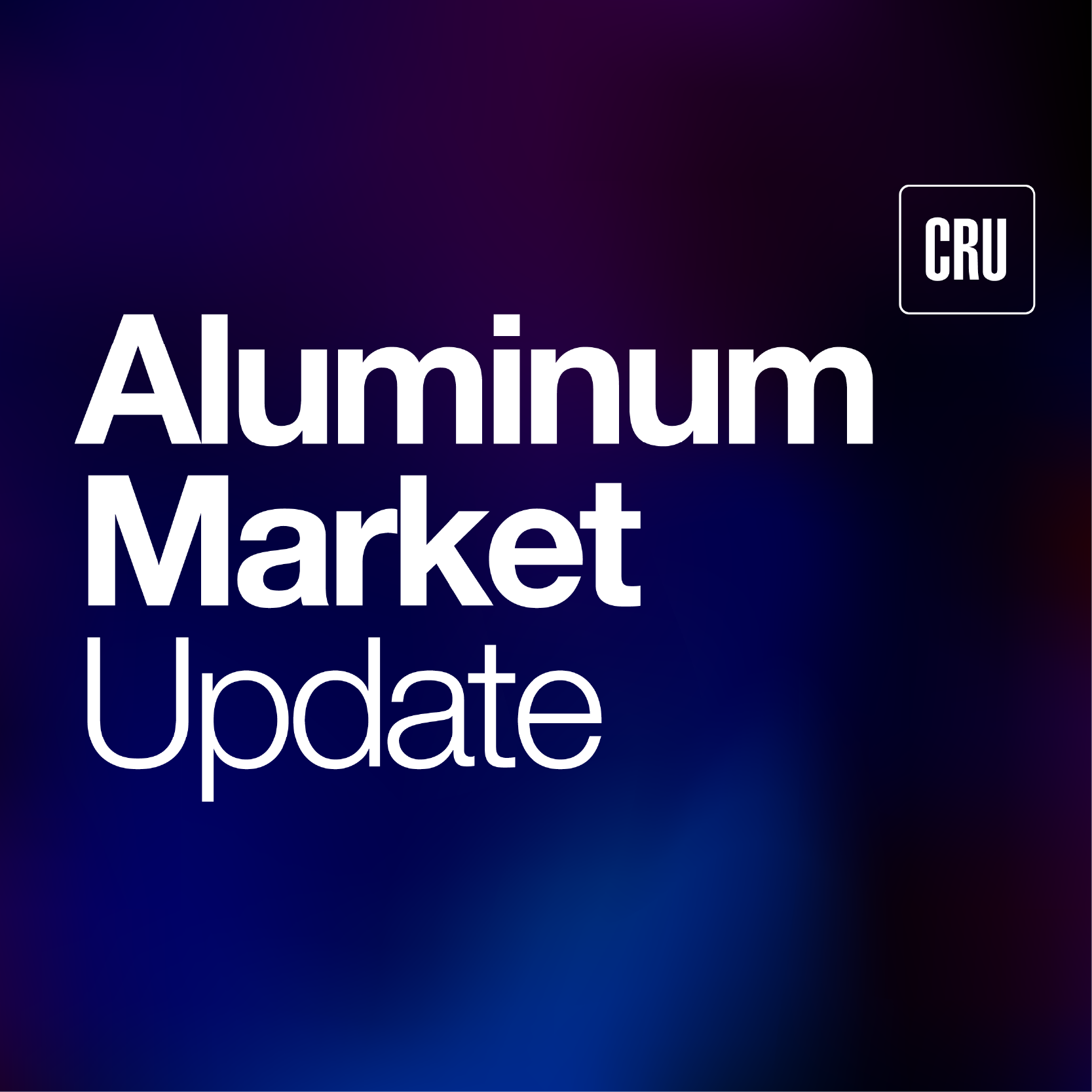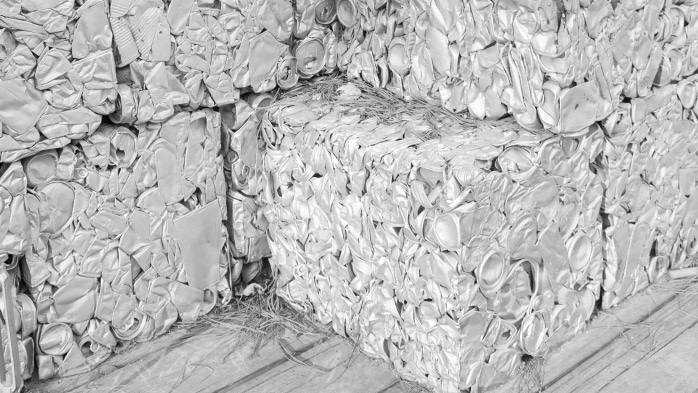Aluminum Scrap Markets

April 29, 2025
Upcycling scrap: Sorting out separation
Written by Nicholas Bell
It’s often difficult to tell where new separation technologies fit into the recycling chain, making it hard to gauge what a company can do – and whether their capabilities go beyond standard processing.
Sortation technology is often puzzle where the end goal determines the methods used and technical jargon blurs the line between basic processing steps and specialization. Instead of segregating the types of sortation equipment, it can be more practical to separate scrap by stages of upcycling:
- Separating metal from non-metal
- Separate ferrous scrap from non-ferrous scrap
- Separating “heavies” (Cu, Zn, etc.) from aluminum
- Separating wrought alloys (5XXX and 6XXX series) from cast scrap
Those four goals represent a progressive ordering. A simplified flow chart might look like:
Vehicle shredding -> Pre-sortation -> Magnetic separation -> Eddy current separation -> Aluminum purification -> Further aluminum recovery refinement
At the end of a vehicle’s life, there’s typically a fork in the road. Dismantle it or shred it?
A dismantler typically separates parts or batteries, but most end-of-life vehicles enter a shredder, becoming a heap of undifferentiated mass.
A class of separator further downstream will attempt to isolate a handful of products from there, depending on their customer base: zorba (general non-ferrous auto-shred), zurik (stainless-steel auto shred), twitch (aluminum-rich auto shred), and zebra (red and yellow metal auto shred).
Pre-sortation, excluding hand separation, describes a broad category of separating metal we’ll call “gravitational” separation: ballistic separators, air classifiers, density separators, and sizing sortation.
- Ballistic: Launches scrap that hits plates set at different distances based on weight
- Air classifier: A wind turbine creates a cyclone to lift material in the air and sort scrap vertically
- Float-sink separation (density): A liquid medium sorts scrap by density – what floats or sinks
- Trommel screen (sizing): Sifting small debris, relevant for ash, residue, dirt, etc.
While not an exhaustive list of pre-sortation techniques, it’s more clearly delineated than others. For instance, sensor-based sorting techniques – infrared, color, 3-D, and induction sensors, separate metal by qualities denoted in their namesake.
Once non-metallics are removed, magnetic sortation comes into play:
- Eddy current separator: Uses conductivity and a magnetic field transitioning between poles, ejecting non-magnetic (non-ferrous) metals
- Overhead separators/Magnetic head pulleys: A large magnet is suspended above a conveyor belt
A mixture of non-ferrous shred has been produced – zorba, that while mostly aluminum, still contains a significant (enough) amount of copper, brass, zinc, magnesium content in the material. Further aluminum recovery can be accomplished by techniques that could colloquially be termed “radiation sortation”: x-ray transmission (XRT), laser-induced breakdown spectroscopy (LIBS), and x-ray fluorescence (XRF).
Let’s focus on the stage 3 (separating “heavies”) of the flow chart with XRT.
XRT is the dry version of heavy-media separation. A conveyor belt pulls post-eddy current scrap through a x-ray scanner that flags scrap for density differences – and ejects it. This is a primary method for upgrading zorba to high-purity twitch (containing 90-98% aluminum by weight). In some cases, XRT can make further distinctions of aluminum it can make, between low-density alloys and high-density alloys (2XXX & 7XXX alloy series).
Its’ cousin – XRF – utilizes a much slower technique whereby scrap is irradiated and ejected based on its fluorescence signal intensity and tends to be the slowest of “radiation sortation” technology.
Finally, LIBS represents the most advanced stage of sortation, using a laser pulse to analyze chemical composition. This can separate based on silicon and magnesium content – the defining elemental content between wrought and cast aluminum.
Given the capital-intensive assets needed to carve clean aluminum streams out of vehicle shred, it’s no surprise that much of the industry is content to export zorba bought from the 300 plus shredders in the US early in the flow chart, while many early investors in twitch are still waiting for the payoff.
For those willing (and able) to pull 6061 apart from 7075 out of shred piles, there’s a whole sector of scrap generation a relative few are chasing. But the spread in scrap prices across different grades would have to be arbitraged across huge volumes at a time – both to generate premiums on a per ton basis and to supply quantities typically required by a smelter.








